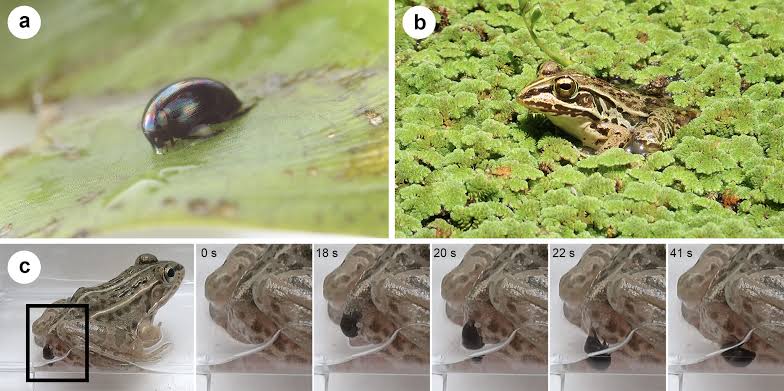The insect Regimbartia attenuata can escape even after being devoured by certain species of frog, among them Pelophylax nigromaculatus, Japanese ecologist Shinji Sugiura of Kobe University announced on Monday.
SEE ALSO: UK researchers begin work on training dogs to detect COVID-19
Like other kinds of frog, Pelophylax nigromaculatus’ lack of teeth makes it unable to kill the insect before eating it. This is done instead by the digestive tract.
But that mostly doesn’t work with Regimbartia attenuata, which, Sugiura says, stimulates the frog to defecate and, like Tim Robbins’ wrongly imprisoned Andy Dufresne in 1994 film “The Shawshank Redemption,” crawls through a river of excrement to its freedom.
It’s the first time that the flight of prey after consumption has been documented scientifically, according to researchers from the magazine Current Biology.
The aforementioned insect and frog are found in the same paddy fields in Japan. To investigate the insect’s capacity for self-defence, Sugiura fed it to young and adult frogs.
The frogs made light work of chowing down the insects. But, within six hours, 93.3 per cent of the impudent invertebrates had come out the other end – and all were as chirpy as ever after their improbable journey.
The insect apparently moves from the frog’s digestive tract to its intended exit at the anus, researchers said. Pressure from the frog’s sphincter keeps its anus closed, prompting the insect to stimulate the frog’s intestine.
This causes the sphincter to relax and allows the insect to take a triumphant log ride to freedom on the frog’s stool.
Researchers observed the same thing happen after consumption of the insect to four other species of frog: Pelophylax porosus, Glandirana rugosa, Fejervarya kawamurai und Hyla japonica.

